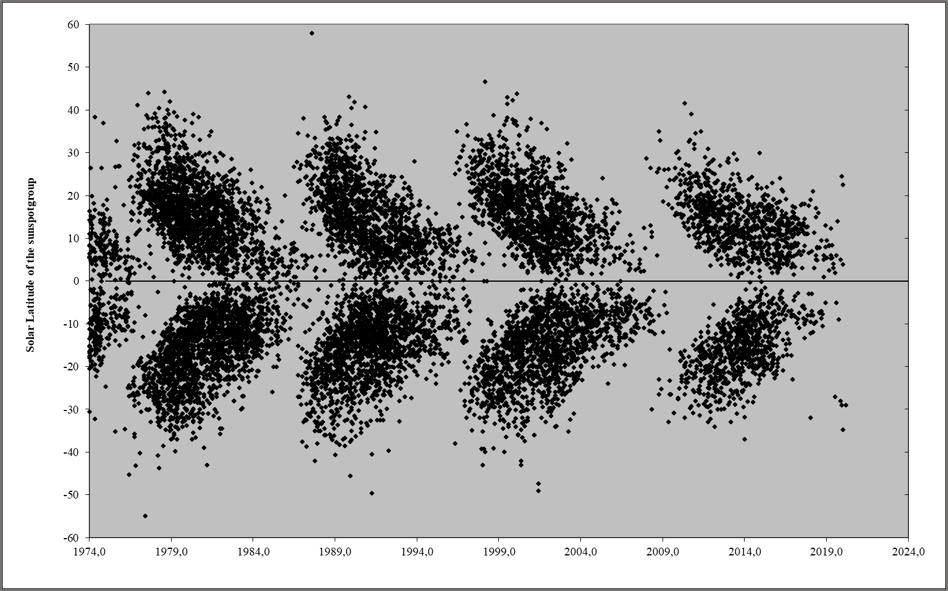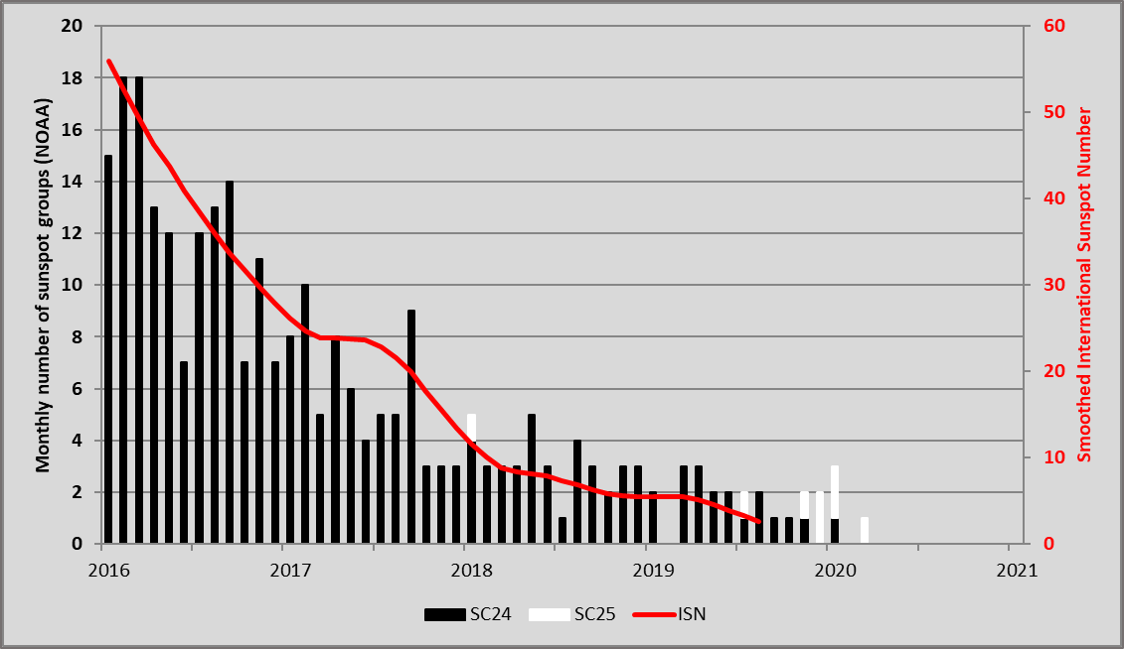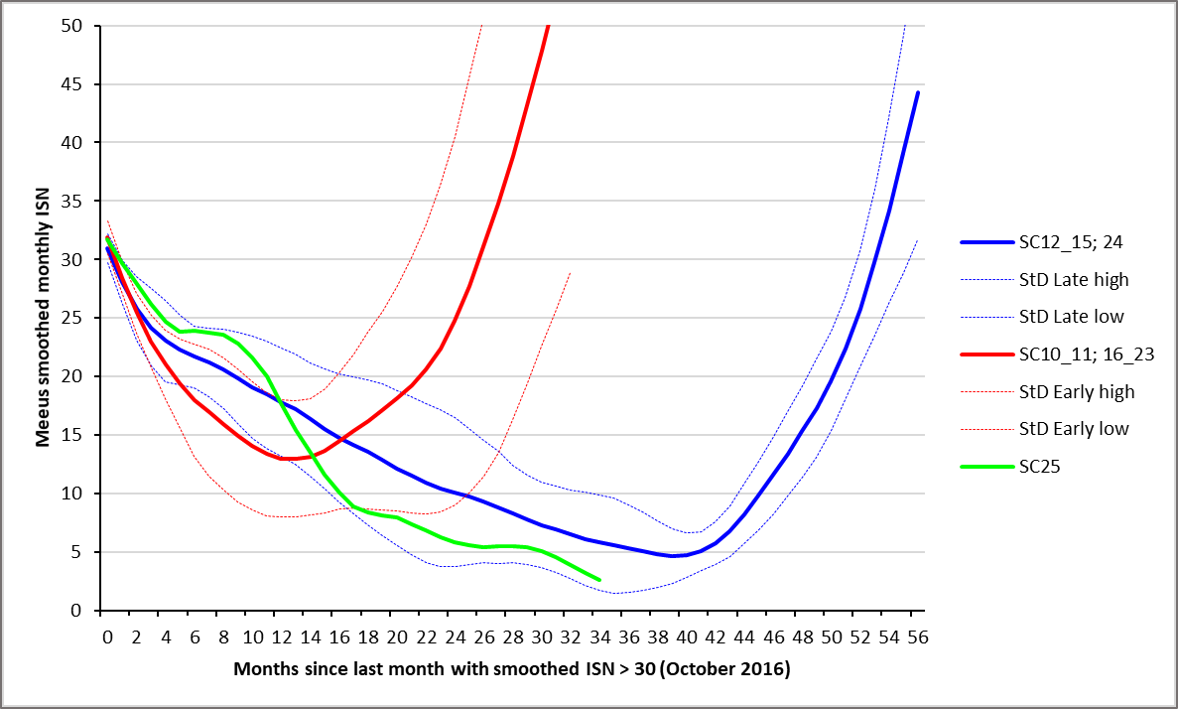With the appearance of active region NOAA 2758 on 8-9 March, there are now 8 numbered sunspot groups of the new solar cycle. Two of these were located on the northern solar hemisphere, and 6 on the southern. This can be seen in the so-called butterfly diagram underneath, displaying for each month since 1974 the latitude of every individual sunspot group (NOAA number) that has appeared. It clearly shows that as a solar cycle is heading for the next minimum, the sunspot groups appear ever closer to the solar equator, gradually becoming smaller and disappearing while the sunspots of the new solar cycle manifest themselves again at high latitudes. As the pattern resembles the wings of a butterfly, it is called a butterfly diagram. The first such butterfly diagram was published by E. Walter Maunder in the Monthly Notices of the Royal Astronomical Society in 1904. The sunspot groups from the new solar cycle that have appeared over the last few months start revealing the outer tips of the new butterfly's wings.

Putting these observations in a bar chart, and distinguishing the old from the new solar cycle groups (resp. black and white bars), one can see that the number of solar cycle 25 (SC25) groups has gradually increased during the second half of 2019. This evolution seems to continue into early 2020 (NOAA 2758 already included in the March data). Solar cycle minimum usually takes place within a few months of the break-even between the number of groups from the two cycles, i.e. the month where the number of SC25 groups becomes larger than that from SC24. This would hint at a minimum somewhere between September 2019 and January 2020.

Meanwhile, sunspot numbers have continued their decrease, as shown in the graph underneath. The SC24-25 transit can be compared to previous solar cycles, which have been conveniently grouped into two bins: cycles 12-15 and 24 (blue curves), and cycles 10-11 and 16-23 (red curves). The dashed curves indicate the standard deviation from the average curve (thick lines). Point "0" is the last month with a smoothed sunspot number above 30. This value was arbitrarily chosen, but could not be much lower as some cycle minima had smoothed sunspot numbers around 18. Month "0" for the current minimum transit was in October 2016. For the "red" group of solar cycles, a minimum occured on the average 13 months later. However, for the other group (blue curves) this minimum took place only after 39 months. The final timing is mostly determined by the strength of the new cycle: more active cycles tend to start their rise earlier (after 8-15 months; "red" group), though there have been 2 notable exceptions: SC17 and SC22. The smoothed sunspot number currently traces the low activity cycle curves (blue group), with a smoothed minimum possibly somewhere between September 2019 and February 2020.

In view of the aforementioned results, and because we are already in March, it might well be that the solar cycle minimum is already behind us. We will only know for sure pending the evolution of the smoothed monthly sunspot number over the next few months. At any rate, solar cycle minimum really seems to be knocking on our door now!





